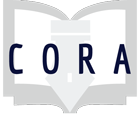Assignment
Exploring Algorithmic Bias with a Summer Bridge Program
This 30-minute activity was a quick introduction to algorithmic bias and the importance of critically evaluating search engine results. Algorithms increasingly shape modern life and can perpetuate bias and discrimination. In pairs, students analyzed the results from Google Image searches and Google Autocomplete suggestions. This activity was based on “Algorithms of Oppression: How Search Engines Reinforce Racism,” by Safiya Umoja Noble. This lesson plan was Part 1 of an hour-long workshop that also included a 30 minute Google Scholar activity. Please see Jennifer Masanaga's Google Scholar activity for Part 2: https://www.projectcora.org/assignment/exploring-google-scholar-summer-b...
1. Students will discuss the effects of algorithm bias in order to articulate how some individuals or groups of individuals may be misrepresented or systematically marginalized in search engine results. 2. Students will develop an attitude of informed skepticism in order to critically evaluate Google search results.
Information Literacy concepts:
Individual or Group:
Ability Level:
The Computer Science Summer Institute Extension Program, or CCSIX, is a 3-week on-campus summer experience for first-year students studying computer science and related STEM fields. This program is designed for groups underrepresented in computing (i.e., women, underrepresented minorities in STEM, and first-generation or low-income college students). See Google's Computer Science Summer Institute (CSSI) https://blog.google/inside-google/life-at-google/googles-computer-scienc...
Incoming first-year students were shy and quiet. I revised the lesson plan to include more Think-Pair-Share and less all-class discussion. The instructor should model the Google Images activity first (Professor Style), then let students do the second activity (Computer Scientist) together in pairs. The students liked “partner time.” This was a summer bridge program, so we decided to keep the worksheets short and the activities social (students talking to each other).

